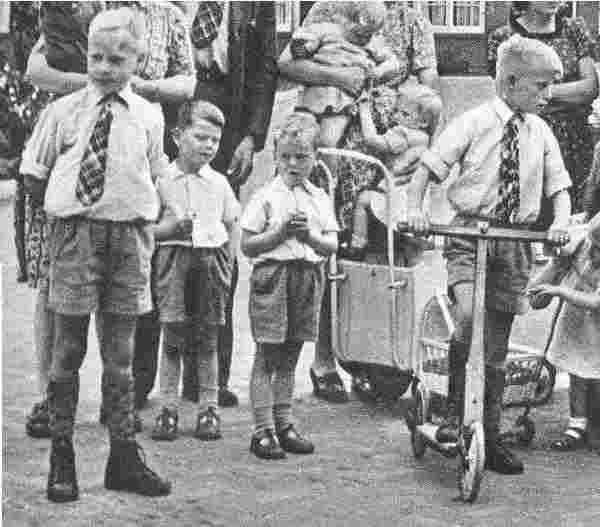
Figure 1.--These Dutch boys about 1950 wear patterened kneesocks and study shoes. Presumably their younger brothers wear English-type school sandals with ankle socks. |

|
Common hosiery worn by Dutch boys have been stockings and socks of various length. Many boys wearing kneepants went barefoot in the summer--especially boys from families of modest circumstances. Long over the knee stockings with kneepants were common in the late 19th century. Boys after the turn of the century began wearing short pamts with kneesocks. Patterned kneesocks were common in the Netherlands, in contrast to England where boys mostly wore grey, solid-colored kneesocks. Kneesocks were worn with both short pants and kneesocks. Some boys even wore knitted kneesocks. Ankle socks began to be more common in the 1950s. I'm not sure if Dutch boys began wearing tights like German boys in the late 1950s.
Many boys wearing kneepants went barefoot in the summer--especially boys from families of modest circumstances. As in much of Europe, barefeet were seen as a sign of poverty. It must have been more comforable, at least in the summer, to go barefoot rather than wear wooden shoes.
Long over-the-knee stockings with kneepants were common in the late 19th century. They were usually black or other dark color--always solid colors. Long stockings declined in popularity after World War I (1914-18) when boys mostly switched to socks. Some yonger boys continued to wear them, with short pants during the winter. Lighter colors, especially tan appeared. As far as we can tell, long stockings declined sharply in popularity during the 1920s. We based this primarily on the fact that most images we have found show boys wearing kneesocks. Hopefully our Dutch readers can tell us more. We do not know if boys for formal occassions wore long stockings as was sometimes the case in Belgium. We see some boys wearing long stockings with suits, but kneesocks seem much more commom. As far as we can tell, they virtually disappeared after World War II by the 1950s.
Boys after the turn of the century began wearing short pamts with kneesocks. Patterned kneesocks were common in the Netherlands, in contrast to England where boys mostly wore grey, solid-colored kneesocks. Boys also wore solid colored kneesocks, mostly colors like tan or grey. One of the most popular colors were white. White kneesocks were considered somewhat dressier than the olther colors. Kneesocks were worn with both short pants and kneesocks. Some boys even wore knitted kneesocks.
Ankle socks were little worn by Dutch boys as late as the 1930s. Ankle socks began to be more common in the 1950s. At first mostly younger boys wore ankle socks. Later mostly younger boys wore kneesocks. HBC notes much larger numbers of boys wearing ankle rather than keesocks in the 1950s. Many of the boys wore solid colored ankle socks. HBC is not sure of the colors involved, but some younger boys appear to have worn white ankle socks--often with sandals. Most Dutch boys began wearing ankle socls in the 1960s anf by the 1970s, kneesocks were little worn.
I'm not sure if Dutch boys began wearing tights like German boys in the late 1950s. Tights were commonly worn by Scandinavian boys, but I'm not sure that they were worn in the Netherlands.
Navigate the Boys' Historical Clothing Web Site:
[Introduction]
[Activities]
[Biographies]
[Chronology]
[Cloth and textiles]
[Clothing styles]
[Countries]
[Topics]
[Bibliographies]
[Contributions]
[FAQs]
[Glossaries]
[Images]
[Images]
[Links]
[Registration]
[Tools]
[Boys' Clothing Home]
Navigate the Boys' Historical Clothing Dutch pages:
[Dutch boys clothing]
[Maiken Island]
[Dutch choirs]
[Dutch royalty]
[Dutch scouts]
[Dutch school uniform]
[Dutch boys bangs]
Navigate the Boys' Historical Clothing national pages:
[Return to the Main Dutch hosiery page]
[Return to the Main countries page]
[Australia]
[Belgium]
[England]
[France]
[Germany]
[Ireland]
[Italy]
[Japan]
[Korea]
[Mexico]
[Netherlands]
[Scotland]
[United States]
